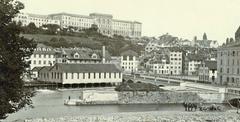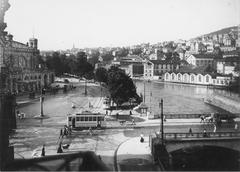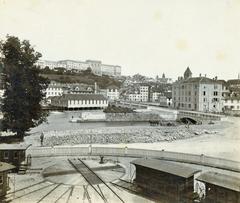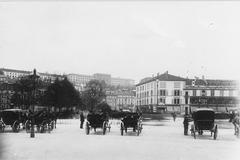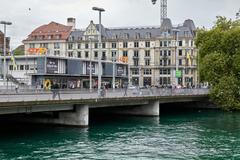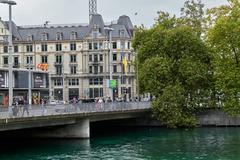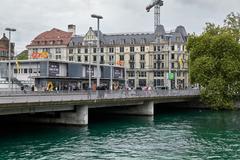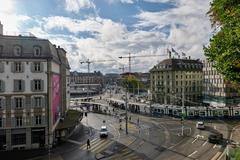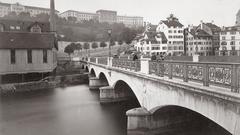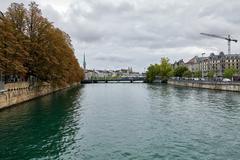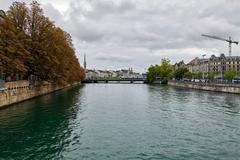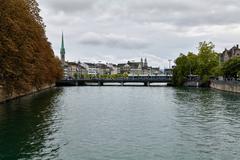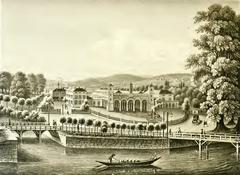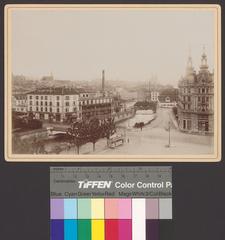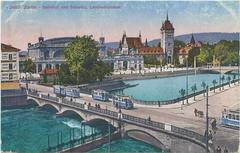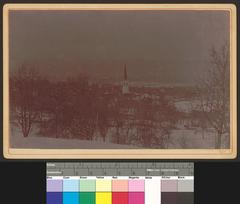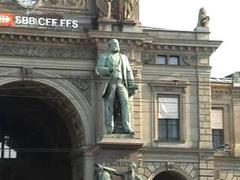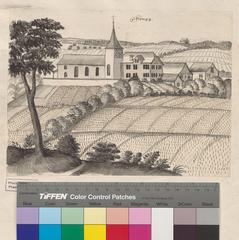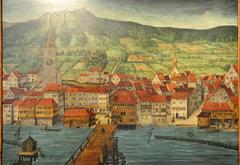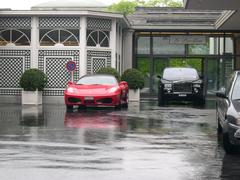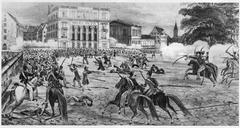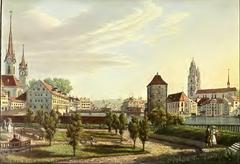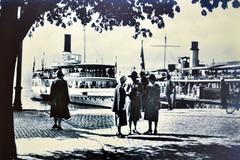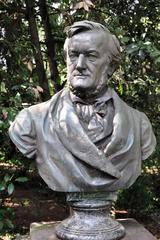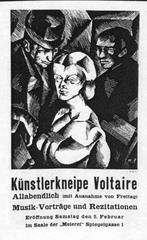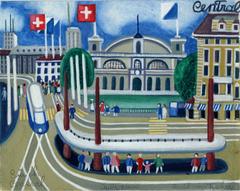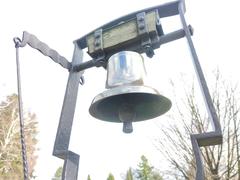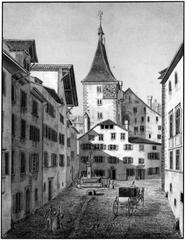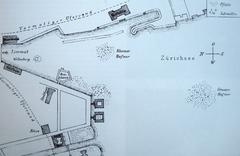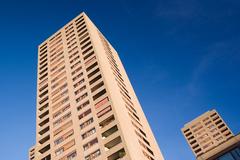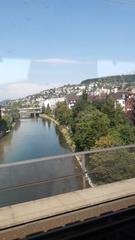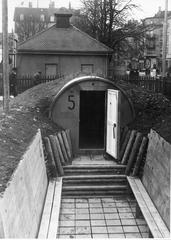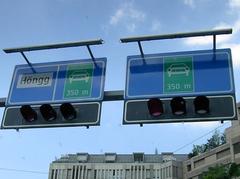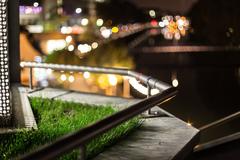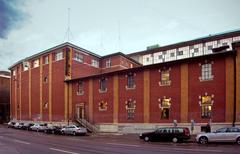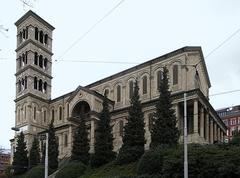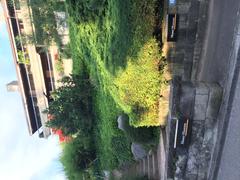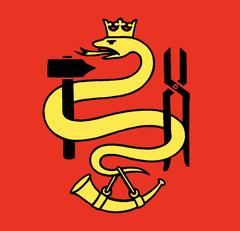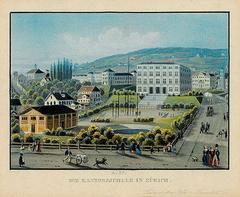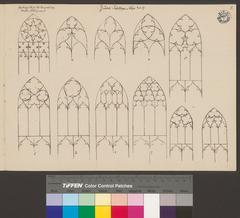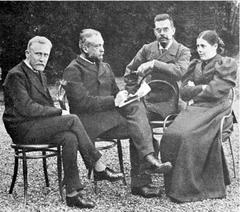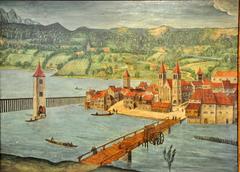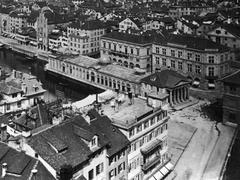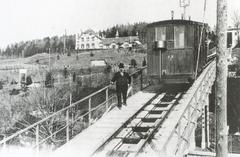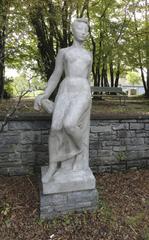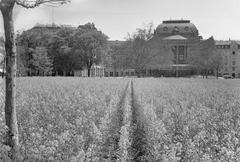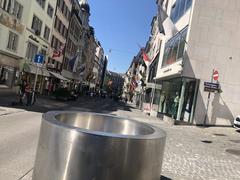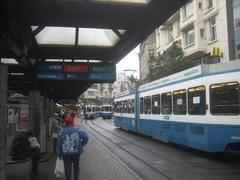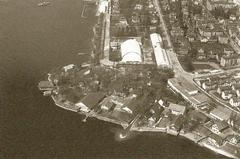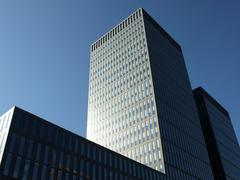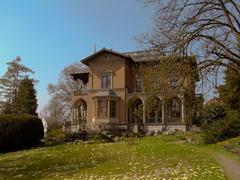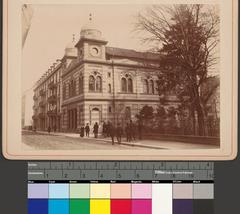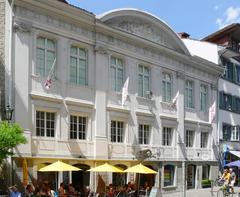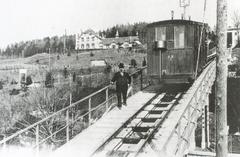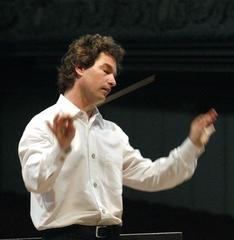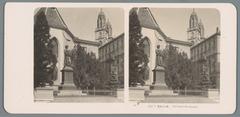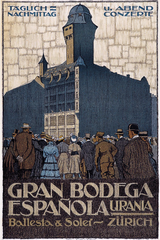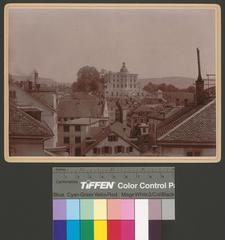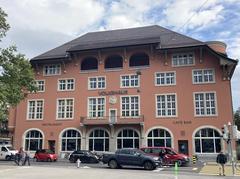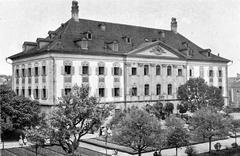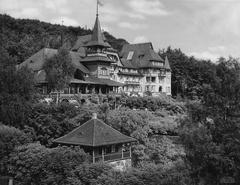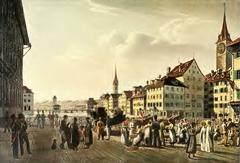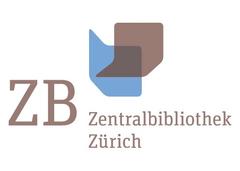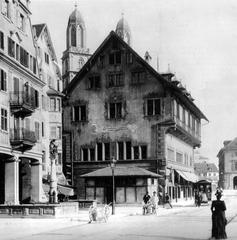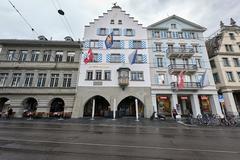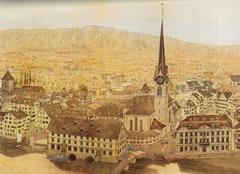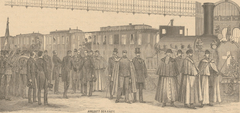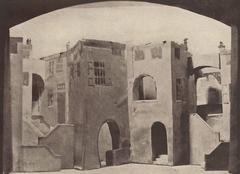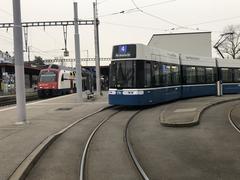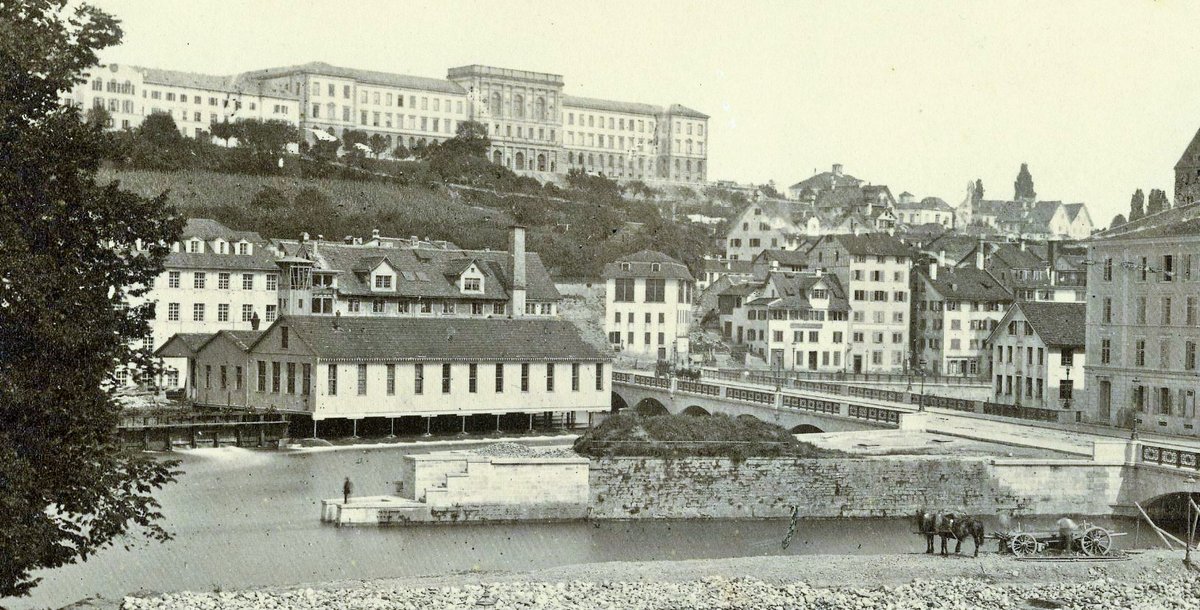
Bahnhofbrücke Zürich: Visiting Hours, Tickets, and Historical Sites Guide
Date: 14/06/2025
Introduction: Bahnhofbrücke Zürich—History and Significance
Bahnhofbrücke Zürich is a vital landmark at the heart of Switzerland’s largest city, connecting Zürich Hauptbahnhof (the main railway station) to the city center and Old Town. More than a functional crossing over the Limmat River, the bridge embodies Zürich’s dynamic urban evolution, cultural vibrancy, and architectural heritage. Since its origins as a mid-19th-century stone arch bridge designed to facilitate the city’s rapid industrial expansion, Bahnhofbrücke has continually adapted to the shifting demands of urban mobility, social change, and modern infrastructure. Today, it stands as a symbol of Zürich’s commitment to blending its historical roots with contemporary life, serving pedestrians, cyclists, trams, and buses around the clock and offering easy access to some of the city’s most renowned attractions.
This guide provides a comprehensive overview of Bahnhofbrücke’s fascinating history, architectural development, practical visiting information, travel tips, nearby landmarks, and its enduring cultural significance. For official information and planning tools, consult the Zürich Tourism Website and Zürich Public Transport (ZVV). Discover why Bahnhofbrücke remains an essential gateway and social artery in the fabric of Zürich (stadt-zueri.ch; archdaily.com; de.wikipedia.org).
Table of Contents
- Introduction
- Early Development and Strategic Location
- Transformations: 19th to 20th Century
- Social Change: The Globus Provisorium
- Urban Renewal and Modernization
- Architectural and Infrastructural Significance
- Visiting Bahnhofbrücke: Hours, Tickets, Accessibility
- Getting There and Travel Tips
- Nearby Attractions
- Guided Tours and Events
- Frequently Asked Questions (FAQ)
- Conclusion and Resources
Early Development and Strategic Location
Bahnhofbrücke’s location is both geographically and historically significant, linking the northern end of Bahnhofstrasse with Zürich Hauptbahnhof and the Old Town. Before the current bridge, a wooden footbridge—“Holzbrüggli”—spanned the river, providing access between commercial sites. With the opening of Zürich Hauptbahnhof in 1871, designed by Jakob Friedrich Wanner, the need for a robust and modern bridge became clear, leading to the construction of the original stone arch bridge in the 1860s (facts.net; stadt-zueri.ch).
Transformations: 19th to 20th Century
Expansion and Semper’s Influence
Rapid urban growth in the late 19th century led to the bridge’s widening in 1871, directed by the renowned architect Gottfried Semper. This expansion, executed by F. Wanner, addressed increased congestion and reflected the era’s ambition for both functionality and monumental design (alt-zueri.ch).
Mid-20th Century Modernization
In response to post-war urban demands, Zürich citizens approved a major redesign in 1948. Between 1950 and 1952, the bridge was transformed into a modern concrete slab structure, built slightly upstream to accommodate trams, buses, and greater pedestrian flows. The redevelopment included an underpass and expansion of public transport facilities, further integrating Bahnhofbrücke into Zürich’s transport network (de.wikipedia.org; etheritage.ethz.ch).
Social Change: The Globus Provisorium
Following the demolition of the original Globus store and Holzbrüggli in 1950, a provisional commercial building—the “Globus-Provisorium”—became a focal point for both commerce and social activism. In 1968, it was the epicenter of youth protests, echoing broader European movements and highlighting Bahnhofbrücke’s role as a stage for societal transformation (stadt-zueri.ch).
Urban Renewal and Modernization
The bridge’s continuous adaptation to urban needs is evident in its evolution from a stone arch to a robust concrete structure. Today, Bahnhofbrücke efficiently handles trams, buses, cyclists, and pedestrians. Its integration with Bahnhofstrasse and proximity to key institutions like the Swiss National Museum and Schweizerische Nationalbank underscore its centrality in Zürich’s urban life (archdaily.com).
Architectural and Infrastructural Significance
Bahnhofbrücke’s pragmatic design features wide sidewalks, dedicated tram and bus lanes, and foundational elements from its historical predecessors. The bridge’s evolution from stone arches to modern concrete reflects Zürich’s approach to urban renewal—preserving heritage while meeting contemporary demands. This infrastructure supports Zürich’s dense public transport network and pedestrian flows, making it a model of sustainable urban planning (de.wikipedia.org).
Visiting Bahnhofbrücke: Hours, Tickets, and Accessibility
- Visiting Hours: Open 24/7; no entry fee or ticket required.
- Accessibility: Fully accessible to wheelchairs, strollers, cyclists, and all pedestrians. Wide sidewalks ensure comfort and safety.
- Transport Connections: Adjacent to Zürich Hauptbahnhof; served by tram lines 3, 4, 6, 7, 10, 15 and bus lines 31, 33, 34, 46. Private vehicles have restricted access to prioritize public transport and pedestrians.
- Tickets: No ticket required to cross the bridge. For trams and buses, purchase tickets at machines, kiosks, or via the ZVV app. The Zürich Card provides unlimited public transport and attraction discounts (ZVV network).
Getting There and Travel Tips
- Public Transit: Bahnhofbrücke is easily reached by trams and buses from any part of the city.
- Best Times to Visit: Early mornings offer tranquil views and soft light for photography; evenings are lively with city lights and local activity.
- Travel Essentials: Bring weather-appropriate clothing; the bridge is exposed to the elements.
- Safety: The area is well-lit and patrolled, but remain aware of trams and cyclists.
- Zürich Card: For unlimited travel and local discounts, consider purchasing a Zürich Card (Newly Swissed).
Nearby Attractions
- Bahnhofstrasse: Zürich’s famed shopping avenue, starting right at the bridge.
- Swiss National Museum: A short walk across the river, featuring Swiss cultural and historical exhibits.
- Lindenhof Hill: Offers panoramic views of the city.
- Grossmünster and Fraumünster: Historic churches accessible by foot.
- Polybahn Funicular: Connects the Central plaza with ETH Zürich’s Polyterrasse; tickets can be purchased at stations (Polybahn Official).
- Platzspitz Park: A tranquil riverside park near the museum.
Guided Tours and Events
While there are no ticketed tours exclusively for Bahnhofbrücke, many guided walking tours of Zürich’s Old Town include the bridge. The area frequently hosts open-air exhibitions, festivals, and seasonal markets, making it a cultural hub throughout the year (zuerich.com).
Frequently Asked Questions (FAQ)
Q: What are the visiting hours for Bahnhofbrücke?
A: Open to the public 24 hours a day, year-round.
Q: Is there an entry fee?
A: No, the bridge is free for all visitors.
Q: How do I get there by public transport?
A: Take tram lines 3, 4, 6, 7, 10, or 15, or bus lines 31, 33, 34, 46, all stopping at or near the bridge.
Q: Is the bridge accessible for people with disabilities?
A: Yes, the bridge is fully accessible, with wide, smooth sidewalks.
Q: Can I join a guided tour that includes Bahnhofbrücke?
A: Yes, many walking tours of Zürich’s historical sites include the bridge as a highlight.
Q: Where can I buy public transport tickets?
A: At ticket machines, kiosks in the Hauptbahnhof, or via the ZVV app.
Conclusion and Resources
Bahnhofbrücke is more than an urban crossing—it’s a living symbol of Zürich’s history, resilience, and cosmopolitan spirit. From its origins in the 19th century through periods of transformation and modernization, the bridge has remained central to both daily life and cultural expression in the city. Visitors can experience panoramic river views, explore nearby museums and landmarks, participate in local events, and enjoy seamless, accessible transit connections.
For further information and travel planning, visit the Official Zürich Tourism Website and Zürich Public Transport (ZVV). Download the Audiala app for immersive audio tours and keep up-to-date with upcoming events and travel tips via social media.
References
- Exploring Bahnhofbrücke: Visiting Hours, History, and Tips for Zürich’s Iconic Station Bridge, 2025, Unknown Author
- Stadt Zürich - Bahnhofbrücke and Globus Provisorium, 2025, Unknown Author
- 23 Spots You Shouldn’t Miss in Zurich If You Love Architecture, 2025, ArchDaily
- Bahnhofbrücke Zürich, 2025, Wikipedia
- Baustellen in Zürich - Bahnhofbrücke Redevelopment, 2025, ETH Heritage
For a richer experience, download the Audiala mobile app for guided audio tours of Zürich’s landmarks, including Bahnhofbrücke. Follow us on social media for the latest updates on Zürich’s vibrant cultural life!
